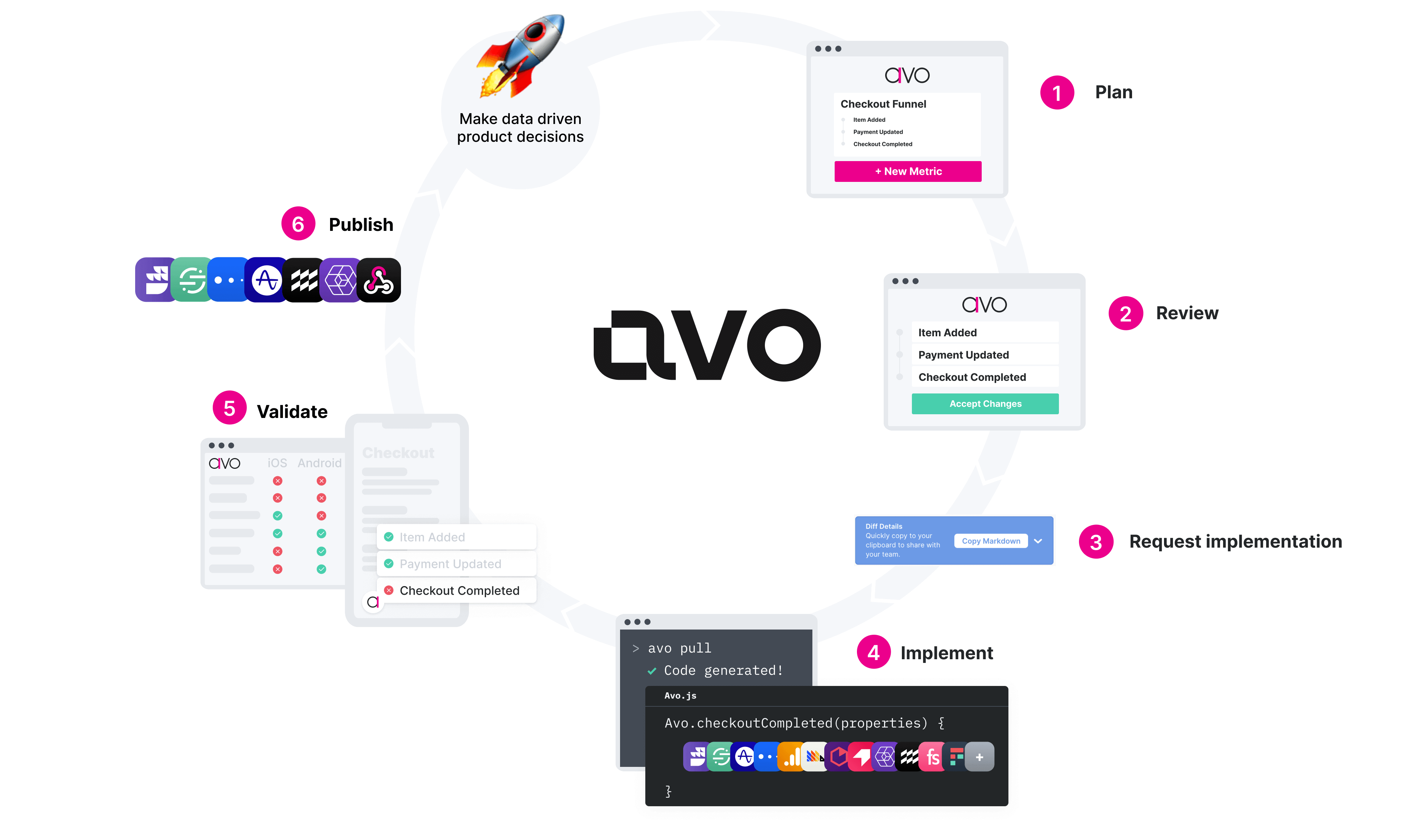Avo Workflow
The Avo workflow is the recommended approach for a team working on an analytics release. The workflow is helpful both when new analytics tracking is being implemented, as well as when existing tracking is being updated.
The Avo workflow for analytics releases is inspired by the general best practices of software development using branched change management, peer-reviews, and approval workflows.
- Plan analytics update
- Review suggestions
- Request implementation instructions with developers
- Implement analytics events
- Validate implementation
- Merge Avo branch and Publish schema to downstream schema registries

Your first release
We recommend your first “full-circle” release in Avo to be a small one. For example, a product release that includes a handful of new or updated events. This will enable you to quickly go through your first analytics release in Avo, from start to finish.
If you don’t have an upcoming analytics release, you can start kicking the tires by recreating a tracking spec you’ve recently shipped in Avo.
Best practices for a streamlined analytics release workflow
Your main branch in Avo should represent what is currently being tracked in production. As soon as event implementation is done, you merge your Avo branch into your Avo main branch.
For your analytics release cycle (and Avo branches), we recommend following the same best practices as generally apply to the software development lifecycle (and git branches):
- Release Early, Release Often. This will streamline collaboration across teams, platforms and products of your new single-source-of-truth tracking plan.
- In practice, this means: Keep Avo branches small and release often, rather than designing a large set of changes that should be implemented over multiple product releases.
Ready to get going?
